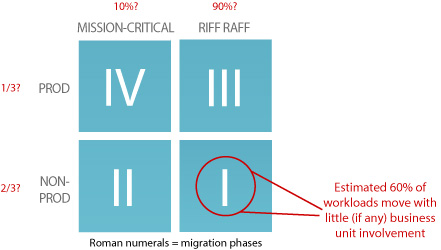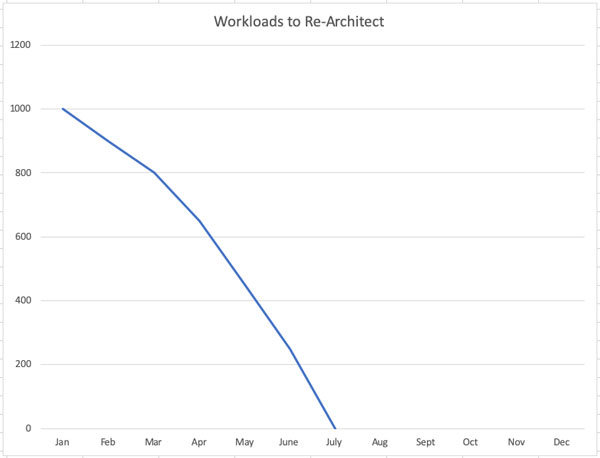Dave Welch (@OraVBCA), CTO & Chief Evangelist
This topic reminds me of a session at VMworld 2006. At the last minute, VMware delayed VMworld to November and moved it from San Francisco’s Moscone West Hall to the Los Angeles Convention Center. The move was simply due to VMworld planners not having anticipated that VMworld 2005’s 1,000+ attendees would scale to well over 3,000 just a year later. San Francisco’s Moscone West Hall couldn’t accommodate the increase and the other Moscone halls were booked. I was surprised that VMware was surprised by demand for VMworld. After all, wasn’t VMware sitting on the world’s most disruptive, enabling technology?
I only recall two sessions from that show: VMware’s Lab Manager team (now vCloud Director) demonstrating the groundbreaking, multi-VM stack host cloning technology acquired from Akimbi, and a very generously-candid presentation by AMD. The latter was titled AMD on AMD: Production Consolidation using VMware and the AMD Opteron Processor by Michael Winslett—Manager of AMD IT Architecture.
In the AMD session, Winslett said AMD’s primary driver for virtualization was that they had run out of power in a key California data center. The confession was that the majority of AMD’s internal workloads were running on their competitor’s chip, thus the session title. As a result of their project’s urgency, AMD muscled its way late into VMware’s ESX 3.0 beta.
During the Q & A, a woman asked looking back what the three things did AMD wish they had done differently. I only recall one of Winslett’s three answers. He said IT probably should have informed all of AMD’s internal groups that IT was going to virtualize the groups’ workloads before they actually did it. If memory serves, apparently a developer was interacting with an IT colleague weeks after the fact. Through that encounter, the developer found out that their bare metal workloads had been virtualized. No one had told the group about the virtualization, and they felt violated. I found it telling that the group found out through this social encounter and not because of any negative operational impact.
The AMD presentation detailed re-architecture planning and risk management worthy of all such projects. Common barriers to such re-architectures include storage and network segmentation, as well as coordination with business units. On the issue of coordination with business units, consider this diagram:
The quadrants are numbered in the sequence in which their workloads will be re-architected. Although the percentages shown will vary from one organization to another, we might generalize that along the X axis, 10% of an organization’s workloads are mission-critical. We also might generalize that along the Y axis, production workloads account for a third of all workloads. From those two estimations, we might estimate that Quadrant I reflects non-production “riff raff” workloads, which account for 60% of the workloads. Quadrant I’s workloads should be able to be re-architected with a relatively minimal amount of business unit coordination.
Properly done, accelerated re-architecture of initial Quadrant I workloads should lead to the non-linear acceleration of re-architecture of the remaining workloads. Minimally, this is due to experience and efficiency gained over time, and positive pressure from outstanding business units observing the improved operational agility of early adopter workloads. The following diagram represents a hypothetical set of 1,000 workloads targeted for re-architecture:
House of Brick often recommends acceleration of re-platforming, consolidation, refresh, and cloud migration projects compared to clients’ incumbent plans. The quintessential re-platform is from bare metal to VMware. I confess no small amount of surprise as to how much re-platforming of bare metal to virtualized platforms we are still doing.
By leveraging House of Brick’s re-architecture experience, clients have leveraged significant operational benefits leading to accelerated ROI for revenue-generating projects, not to mention increased savings compared to their incumbent plans. Many such re-architecture projects can be largely if not entirely self-funded, including software, hardware, and professional services. And yes, I confess that there have been exceptional cases when the proximate window of financial and/or operational opportunity was so great that I have even recommended clients accomplish some AMD-style re-architecture of Quadrant I workloads without business unit coordination.








